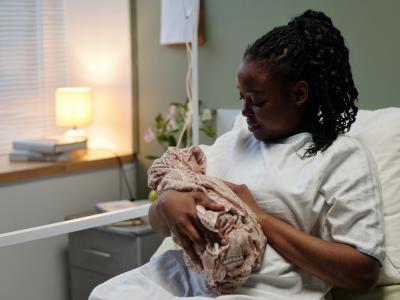More Ebola in DRC, with new case possibly tied to traditional healers
The Democratic Republic of the Congo's (DRC's) Ebola technical committee said there are three new cases of Ebola today, raising the outbreak total to 3,343, and 432 suspected cases are under investigation.
The technical committee, the CMRE, said the death toll now stands at 2,210. Today's cases come from Mabalako and Biena, which had gone 85 days without a new case.
The Biena case involves a 28-year-old man who may have contracted the disease after visiting a center housing traditional healers in the Mabalako health zone during the first week of December. Earlier this week, the CMRE said three traditional healers from Mabalako had been diagnosed as having Ebola.
The 10 cases reported yesterday all originated in Mabalako, as well, the CMRE said.
Dec 11 CMRE report
Dec 12 CMRE report
Report details changes to CDC anthrax vaccine recommendations
The US Centers for Disease Control and Prevention (CDC) today published a detailed overview of several changes its vaccine advisory group made to anthrax vaccine recommendations, based on study findings published since its last recommendation update in 2010.
Published in a Morbidity and Mortality Weekly Report (MMWR) document, the report reflects the findings of a CDC Advisory Committee on Immunization Practices (ACIP) working group that reviewed the latest literature, which formed the basis of the recommendation changes that ACIP approved at its meeting in February.
The recommendation changes apply to both pre- and post-exposure prophylaxis. Though they mostly apply to anthrax vaccine adsorbed (AVA, Biothrax), the only licensed vaccine, they also cover the next-generation vaccine produced by Emergent BioSolutions, which is in a phase 3 trial and may be needed on an emergency basis in the event of a wide-area release of aerosolized Bacillus anthracis, the bacterium that causes anthrax. The authors said today's report can used by emergency preparedness officials to develop plans for response to a wide-area release.
In the report, the group details several recommendation changes and the scientific literature that backs them. The revisions address intramuscular versus subcutaneous administration routes, use of reduced and half doses to extend vaccine supply during public health emergencies, shortening the duration of antimicrobials during postexposure prophylaxis, and extending the interval for pre-exposure prophylaxis booster doses.
Dec 13 MMWR report
CDC, USAID to assist Samoa in battle against large measles outbreak
Teams from the CDC will be deployed to Samoa to help battle a large measles outbreak that has overwhelmed the island, and the US Agency for International Development (USAID) is giving disaster assistance to the World Health Organization's (WHO's) vaccination efforts in that country.
As of yesterday, the government of Samoa tweeted that 4,995 measles cases have been reported since the outbreak began this fall, including 72 measles-related deaths. Ninety-three percent of Samoa's population had been vaccinated against the virus.
Samoa has been a hotbed of anti-vaccine activity, the Washington Post reports, fueled in part by the death of two infants last year who died shortly after receiving measles, mumps, rubella vaccine (MMR). In 2018, the WHO estimated only 31% of Samoan children received a MMR dose in their first year of life.
USAID will give the WHO $200,000 in disaster assistance, the group said in a news release.
"With this financing, the WHO is helping the Samoan Ministry of Health to coordinate the deployment of emergency medical teams of specially trained international health professionals—including a delegation of 70 Hawaiian doctors and nurses who were on the ground in Samoa during the week of December 2, 2019—to support vaccination across the islands," USAID said.
Government of Samoa Twitter feed
Dec 11 Washington Post story
Dec 11 USAID news release
US survey finds flu vaccination seldom required in child care centers
A national telephone survey of US child care center directors reveals that very few require flu vaccination for attending children or for adult caregivers, according to a study today in the Journal of the Pediatric Infectious Diseases Society (PIDS).
The researchers surveyed 518 directors selected at random from a national database in 2016. They found that only 24.5% had a flu vaccine requirement for children receiving care in their centers, and only 13.1% had such a requirement for the adults caregivers.
After adjusting for covariates, the authors determined that having a state flu vaccine law for children was the only factor tied to having a child flu vaccine requirement. And having a child flu vaccine requirement, in turn, predicted having an adult vaccine requirement.
"When kids are in close proximity to each other in child care centers they spread infectious diseases very efficiently," said lead study author Timothy R. Shope, MD, MPH, of UPMC Children's Hospital of Pittsburgh, in a PIDS press release. "The interventions that we use for older children and adults to prevent influenza, such as maintaining a distance of 3 feet between individuals, and coughing or sneezing into a shoulder or an elbow, don't work very well for a 2-year-old. So the best way we can protect them is through immunization."
In their study, the authors conclude, "Given the high risk of children in child care and low director-reported influenza vaccine requirements, more states should pass laws requiring influenza vaccine for children and adult caregivers at child care programs."
Dec 12 J Pediatr Infect Dis Soc abstract
Dec 12 PIDS news release
ECDC: 1 in 3 foodborne outbreaks in EU linked to Salmonella
The European Centre for Disease Prevention and Control (ECDC) said one in three foodborne disease outbreak reported across the European Union (EU) in 2018 were caused by Salmonella. The finding was part of the European Food Safety Authority (EFSA) and ECDC's annual report on zoonosis trends.
In 2018, EU member states reported 5,146 foodborne outbreaks affecting 48,365 people. Salmonella outbreaks in Poland, Spain, and Slovakia—mainly connected to eggs—accounted for 67% of the 1,581 Salmonella outbreaks.
According to the ECDC, salmonellosis was the second most commonly reported gastrointestinal infection in humans in the EU (91,857 cases reported), after campylobacteriosis (246,571). Shiga toxin–producing E coli was the third. with 8,161 reported cases
"The number of reported outbreaks suggests that there's room for raising awareness among consumers as many foodborne illnesses are preventable by improving hygiene measures when handling and preparing food," said EFSA's chief scientist Marta Hugas, PhD.
Among other zoonoses, West Nile infections saw a notable increase in 2018, with Italy reporting the most cases (610), followed by Greece (315), and Romania (277). Czech Republic and Slovenia reported their first cases since 2013.
Dec 12 ECDC report











